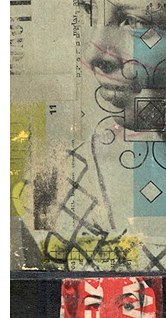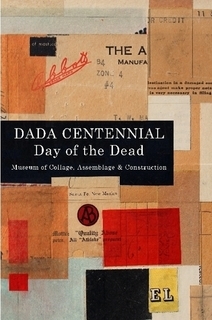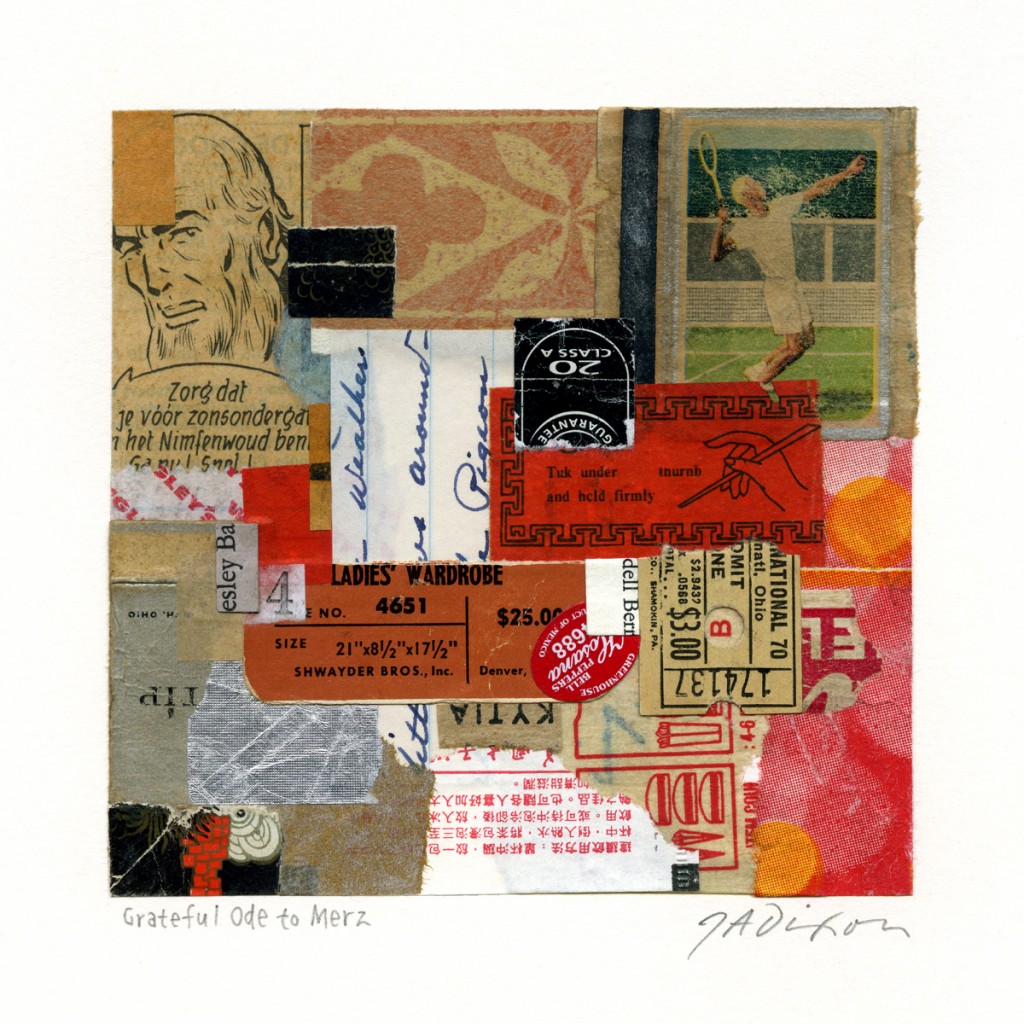“Self-education is, I firmly believe, the only kind of education there is.”
― Isaac Asimov
A growing number of people will now agree that most emerging social networks are not what they’re cracked up to be. For an artist who spends a lot of time in solitary activities, it can be a beneficial connection to a larger body of peers. I concur with Cal Newport that it can also be a habit-forming distraction that pulls one into a more shallow mode than the deep concentration necessary to produce exceptional creative work. There are times, however, when a Facebook interaction is so good that I have to marvel at the way people can quickly exchange valuable information across continents. Case in point: a recent back-and-forth between Peter Dowker (Lac-Brome, Quebec) and Matthew Rose (Paris, France) about image transfers for collage assembly. When Susanna Lakner (Stuttgart, Germany) and Melinda Tidwell (Santa Fe, New Mexico) jumped in, it developed into one of the best step-by-step descriptions of gel-medium transfer that I have seen. Here is my summary of Dowker’s technique—
“First of all, stay away from the hard stuff, like the toxic chemical cleaner trichlorethylene. Instead, use a gel-medium method to achieve an effective transfer. Apply a healthy coat of liquid acrylic medium to the image side of an ingredient and adhere it face down. GLOSS medium sticks better than matte. Rub with a brayer, or burnish gently with a soup spoon, and let it dry. Using a bit of water, gently rub off the paper backing with your finger or a piece of cloth. Don’t use too much water and slowly move over the surface, removing a bit at a time.  Use oil varnish or vegetable oil to bring up the image. A minute amount of paper will always remain behind, giving it a cloudy appearance when dry. The oil varnish or vegetable oil will make that disappear and enhance the transparency. I formerly used matte oil-based varnish, which works okay. The vegetable oil idea comes from Allan Beally. There will be hardly any build up at all — probably less than any of the collaged pieces next to it. When making a transfer onto vintage papers, I find it’s better to seal them first before you begin — 1 or 2 coats of matte gel medium — the water involved to rub off the back of the transfer can destroy the substrate. Keep in mind that different papers react in different ways. Sealing is only necessary if the base is fragile. Be patient after gluing down the transfer. Letting it TOTALLY dry before rubbing off the paper is essential. If you’re not patient and start rubbing too soon, the image can start to break down. Wait a minimum of 2 hours (overnight is best) before removing the paper backing. If I know I’m going to be using a transfer from the outset, I start the piece on heavy card, to keep the substrate from becoming wrinkly in one spot from the water. The method works with original elements or copies. When I do use a laser print, it’s on thin, cheap office paper. Removing the paper backing can take ten minutes or more, because I go slow, not wanting to damage the image — not really that long at all. I’ve had the most luck since I began sealing the receiving surface with matte medium and waiting longer for it to dry. And the oil works wonders!”
Use oil varnish or vegetable oil to bring up the image. A minute amount of paper will always remain behind, giving it a cloudy appearance when dry. The oil varnish or vegetable oil will make that disappear and enhance the transparency. I formerly used matte oil-based varnish, which works okay. The vegetable oil idea comes from Allan Beally. There will be hardly any build up at all — probably less than any of the collaged pieces next to it. When making a transfer onto vintage papers, I find it’s better to seal them first before you begin — 1 or 2 coats of matte gel medium — the water involved to rub off the back of the transfer can destroy the substrate. Keep in mind that different papers react in different ways. Sealing is only necessary if the base is fragile. Be patient after gluing down the transfer. Letting it TOTALLY dry before rubbing off the paper is essential. If you’re not patient and start rubbing too soon, the image can start to break down. Wait a minimum of 2 hours (overnight is best) before removing the paper backing. If I know I’m going to be using a transfer from the outset, I start the piece on heavy card, to keep the substrate from becoming wrinkly in one spot from the water. The method works with original elements or copies. When I do use a laser print, it’s on thin, cheap office paper. Removing the paper backing can take ten minutes or more, because I go slow, not wanting to damage the image — not really that long at all. I’ve had the most luck since I began sealing the receiving surface with matte medium and waiting longer for it to dry. And the oil works wonders!”
My thanks to Mr. Dowker for allowing me to share this description here. Some of us have also used a variation that involves removing the paper backing independently, in a basin of water, before adding it to the collage surface. When doing that, one ends up working with a collage element that is essentially a veneer of acrylic medium, which introduces a size limitation and other aspects of craftsmanship. Peter calls this the “gel-skin method.” Although he has used it many times, a drawback for him is the need to build up 4 to 5 layers of medium — so it’s not too fragile for the rubbing stage — which makes for a thicker transfer. According to Peter, “not very appealing to the fussier ones among us.” The gel-skin method does allow for a right-reading image (if that’s important), otherwise the previous method will result in a flopped image (unless it can be photomechanically or digitally reversed prior to transfer). Each collage artist will refine an individual methodology, and, not surprisingly, new discoveries and “fortunate accidents” occasionally can result. As Peter reminds us, “Don’t be shy!”
Take a few minutes to savor a few of his extraordinary artworks below—

CUTTERS
collage with image transfer by P Dowker

ACORN
collage with image transfer by P Dowker

VAAVING
collage with image transfer by P Dowker

TOYS
collage with image transfer by P Dowker
 It is with high anticipation that I await my first look at the new publication which documents the Dada Centennial exhibition organized by the Ontological Museum. My sincere thanks to Cecil Touchon for including the essay that I wrote last year — On Kurt Schwitters and a Century of Dada — but, most of all, for volunteering so much of his time to this historic observation and to the ongoing administration of the institution he founded, now located in Santa Fe, New Mexico.
It is with high anticipation that I await my first look at the new publication which documents the Dada Centennial exhibition organized by the Ontological Museum. My sincere thanks to Cecil Touchon for including the essay that I wrote last year — On Kurt Schwitters and a Century of Dada — but, most of all, for volunteering so much of his time to this historic observation and to the ongoing administration of the institution he founded, now located in Santa Fe, New Mexico.




